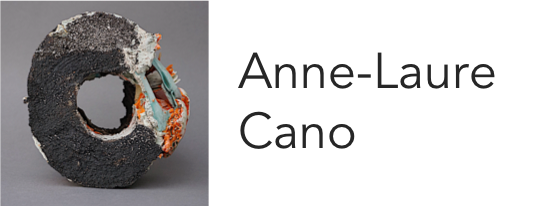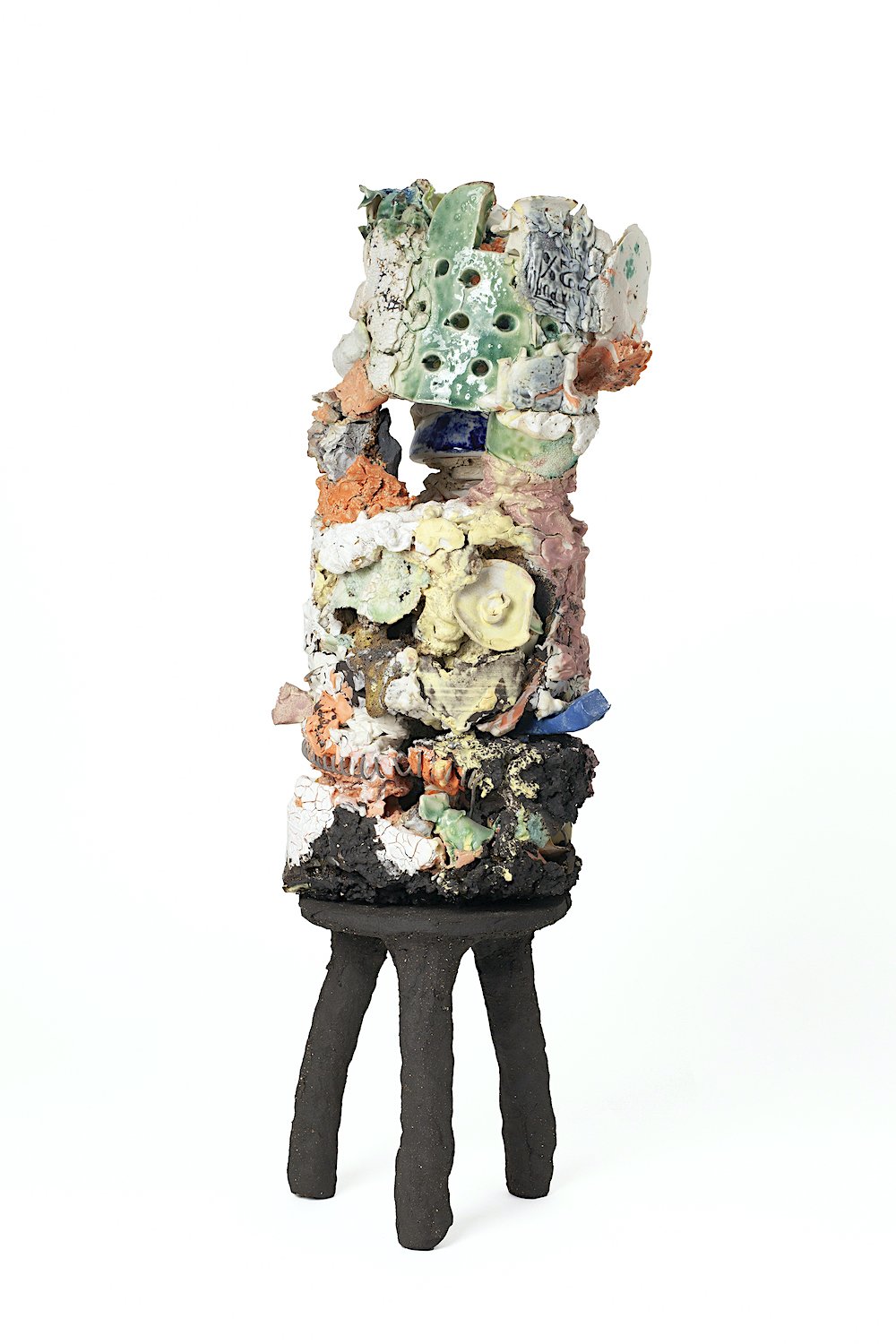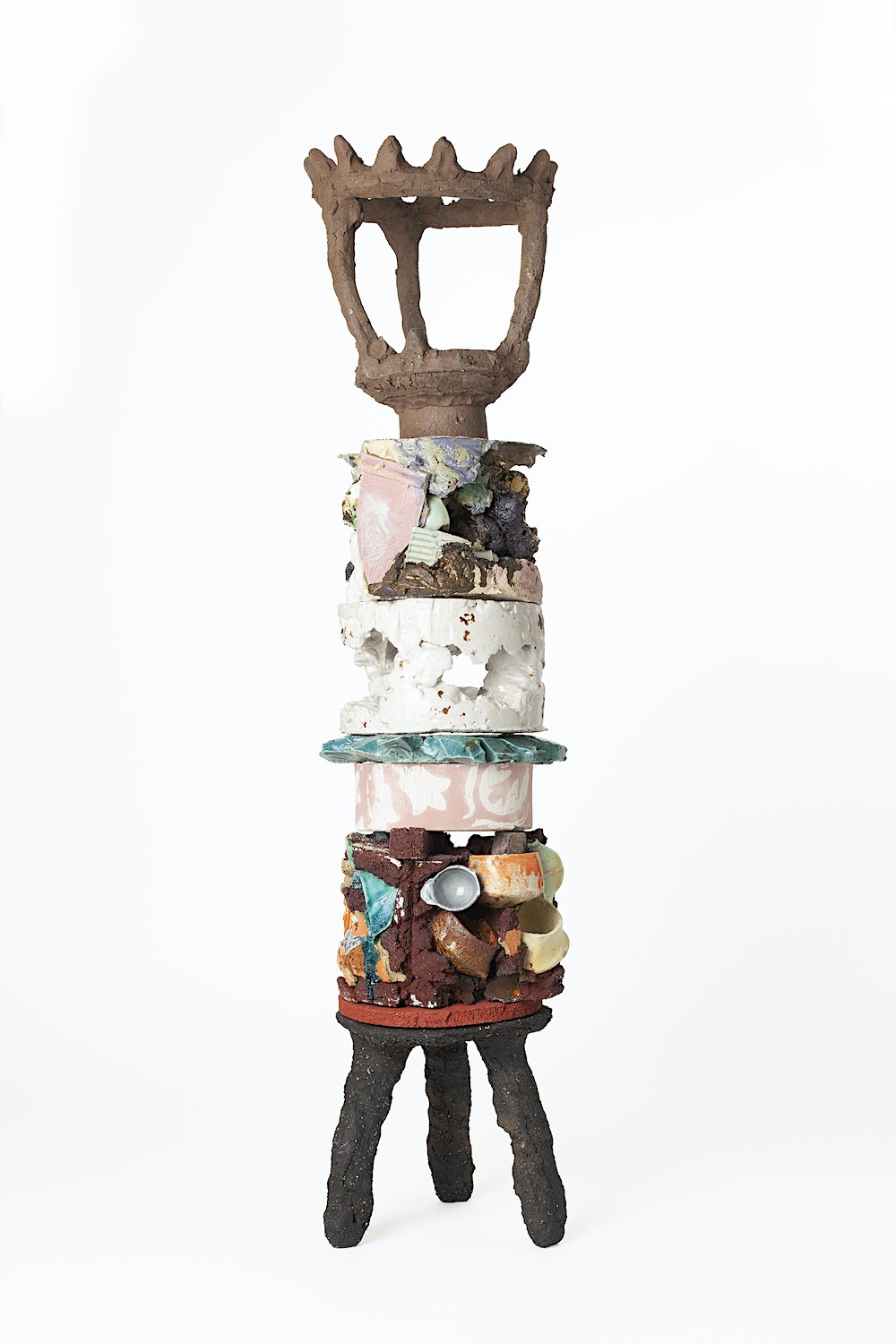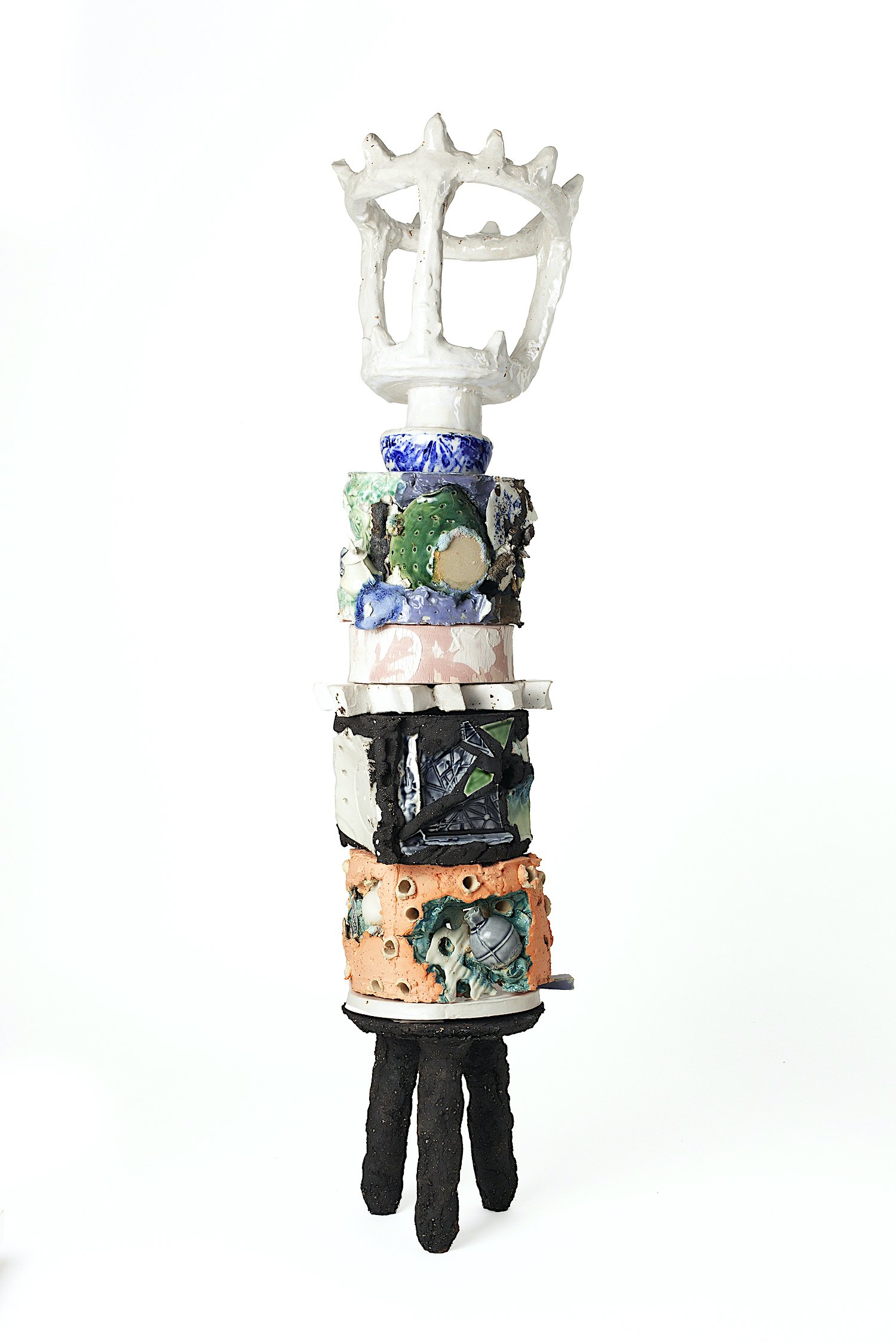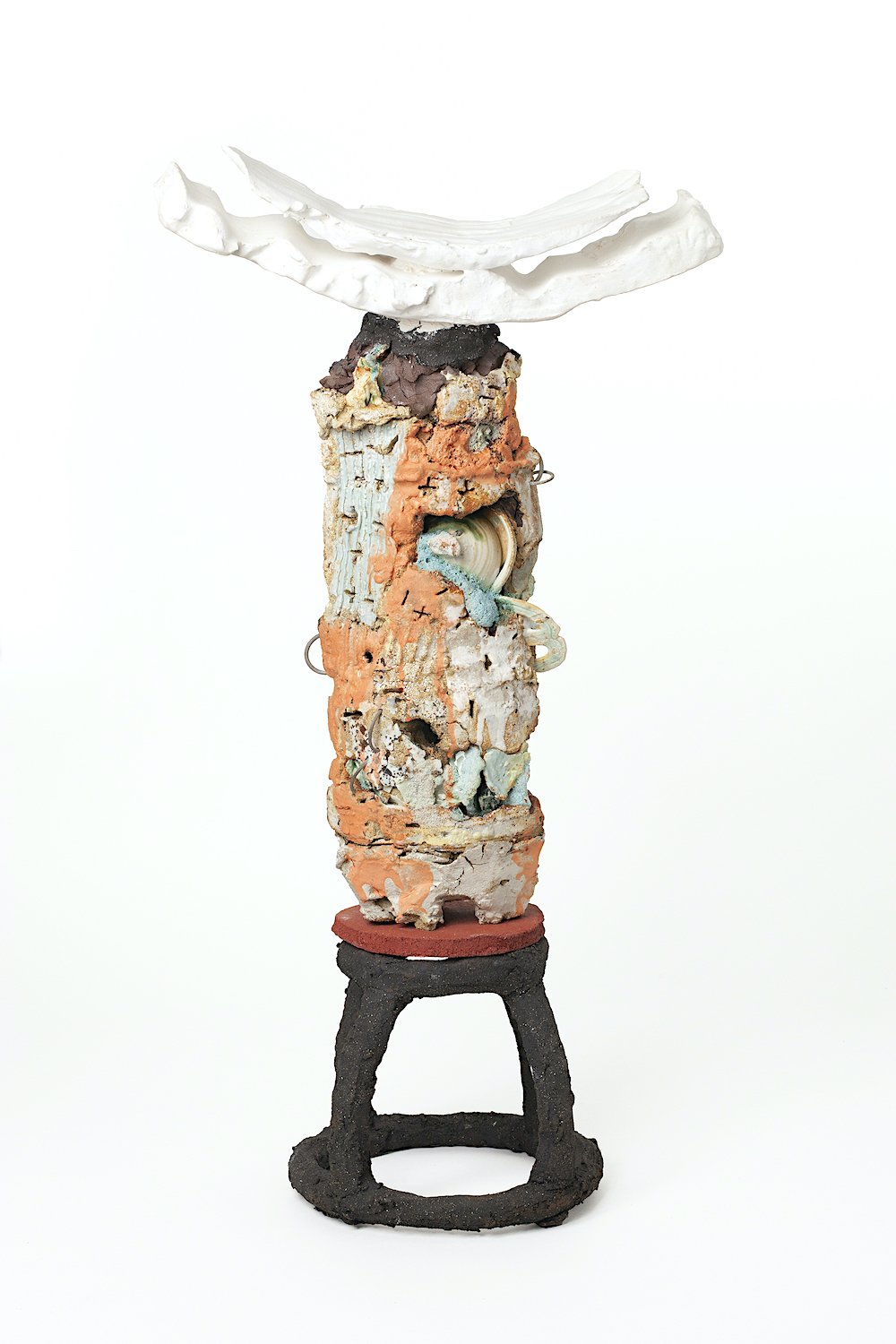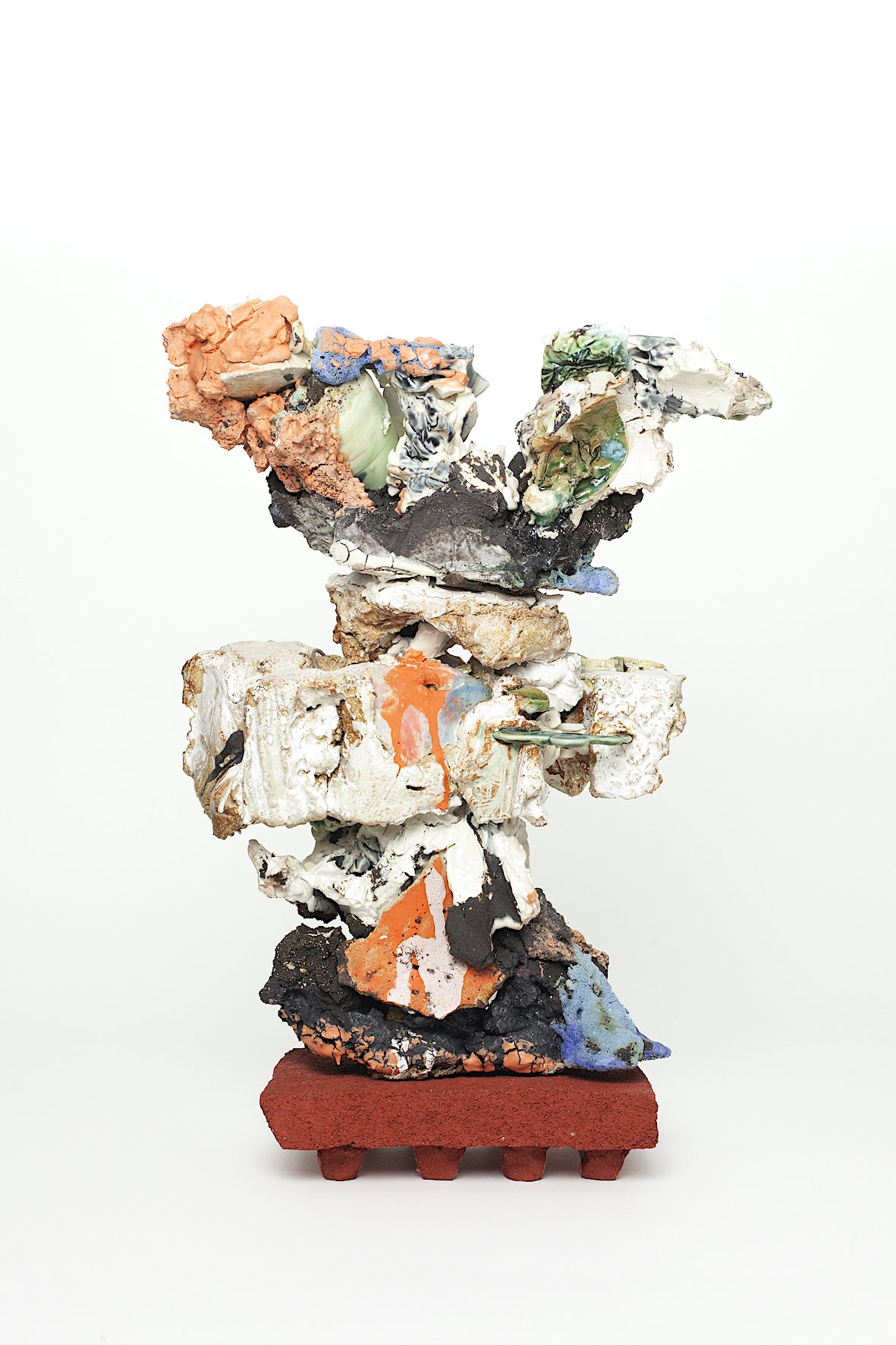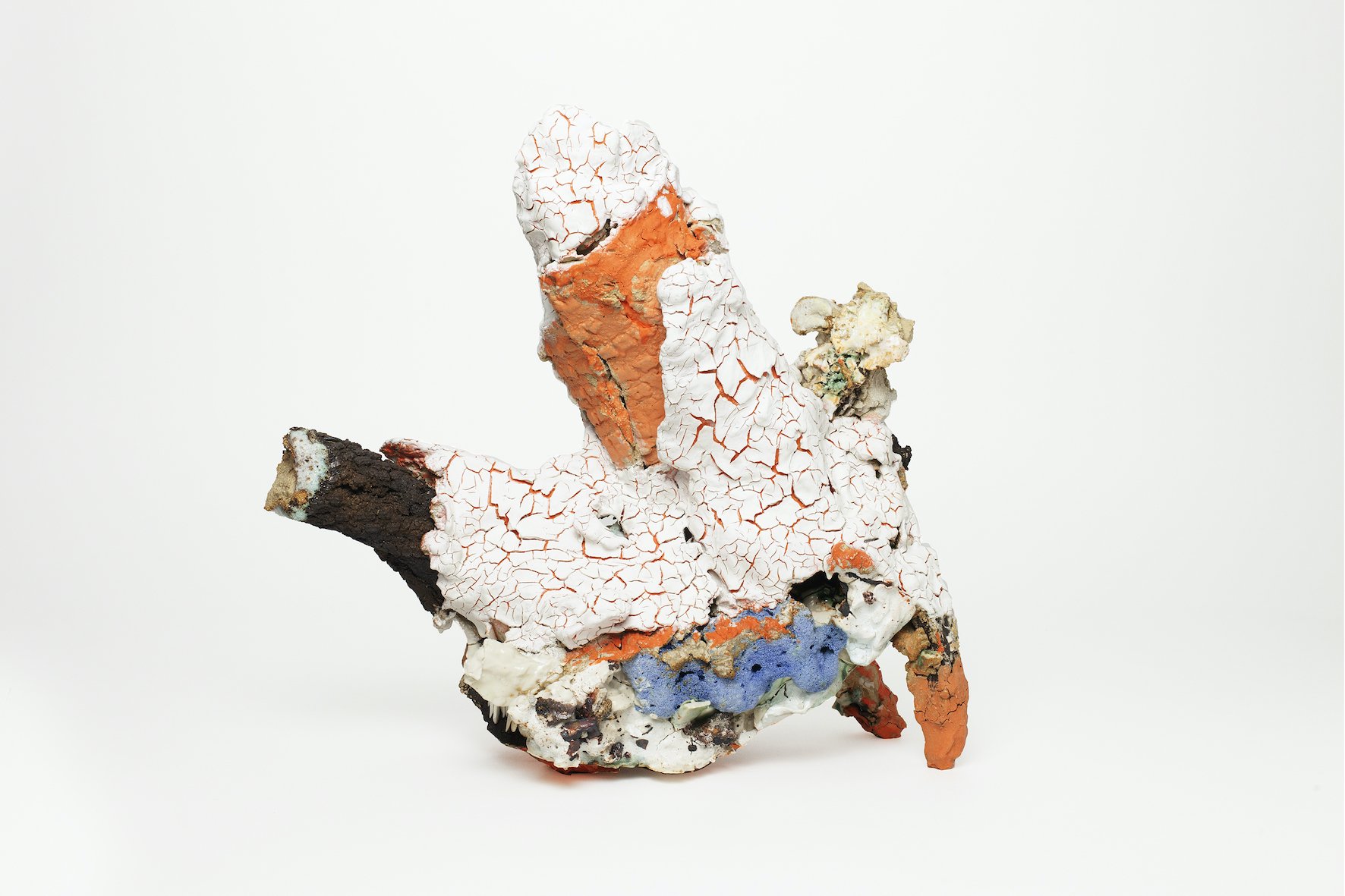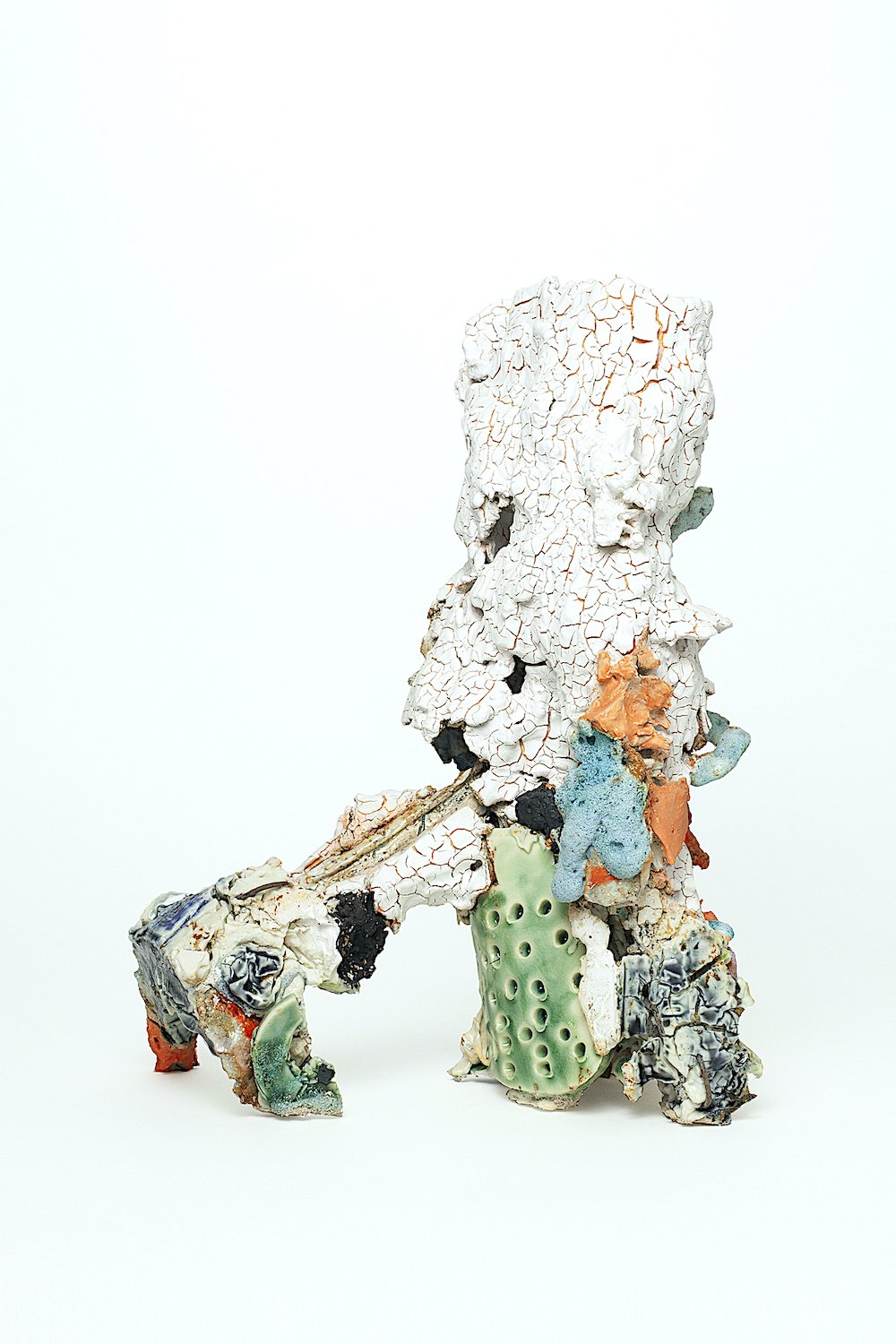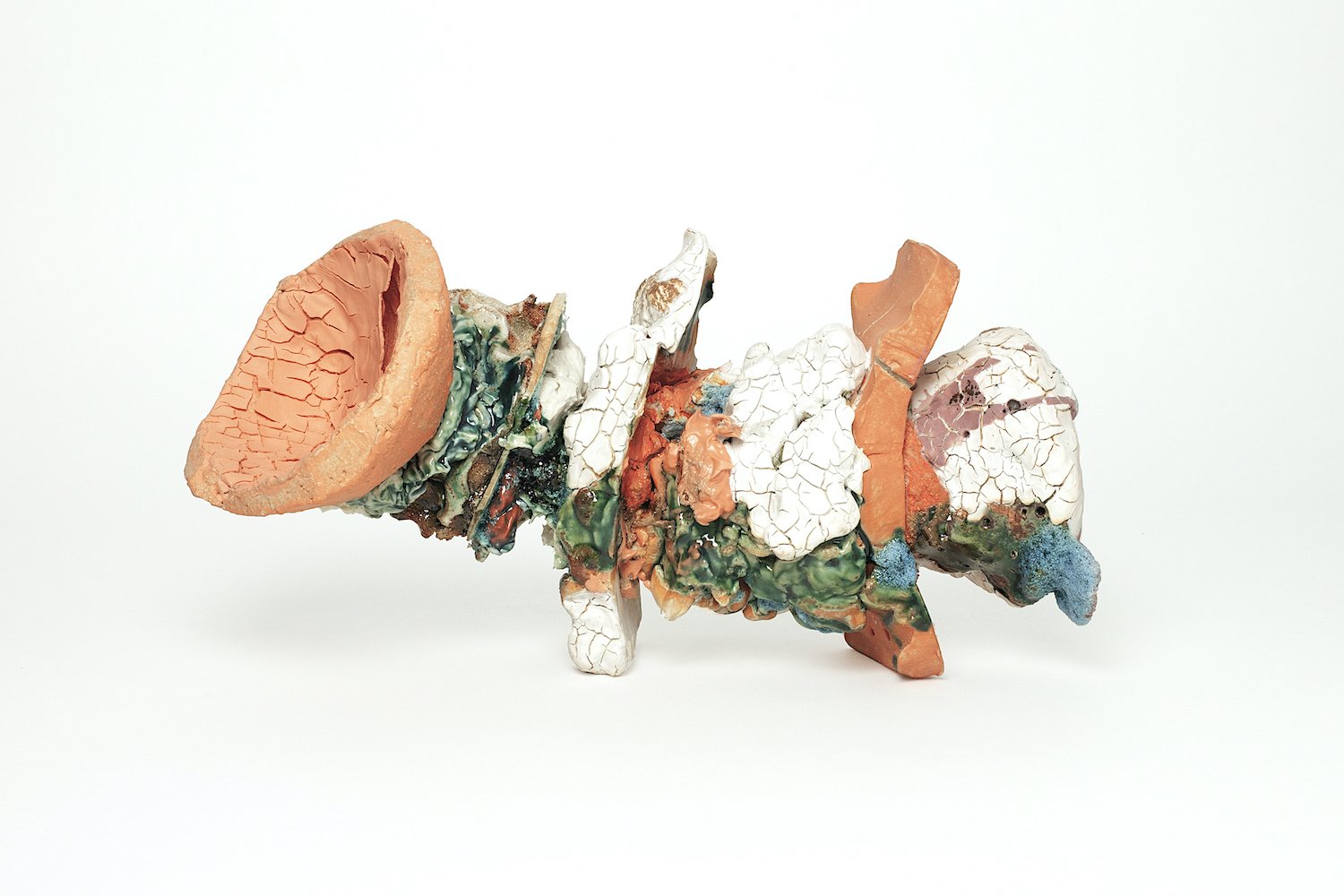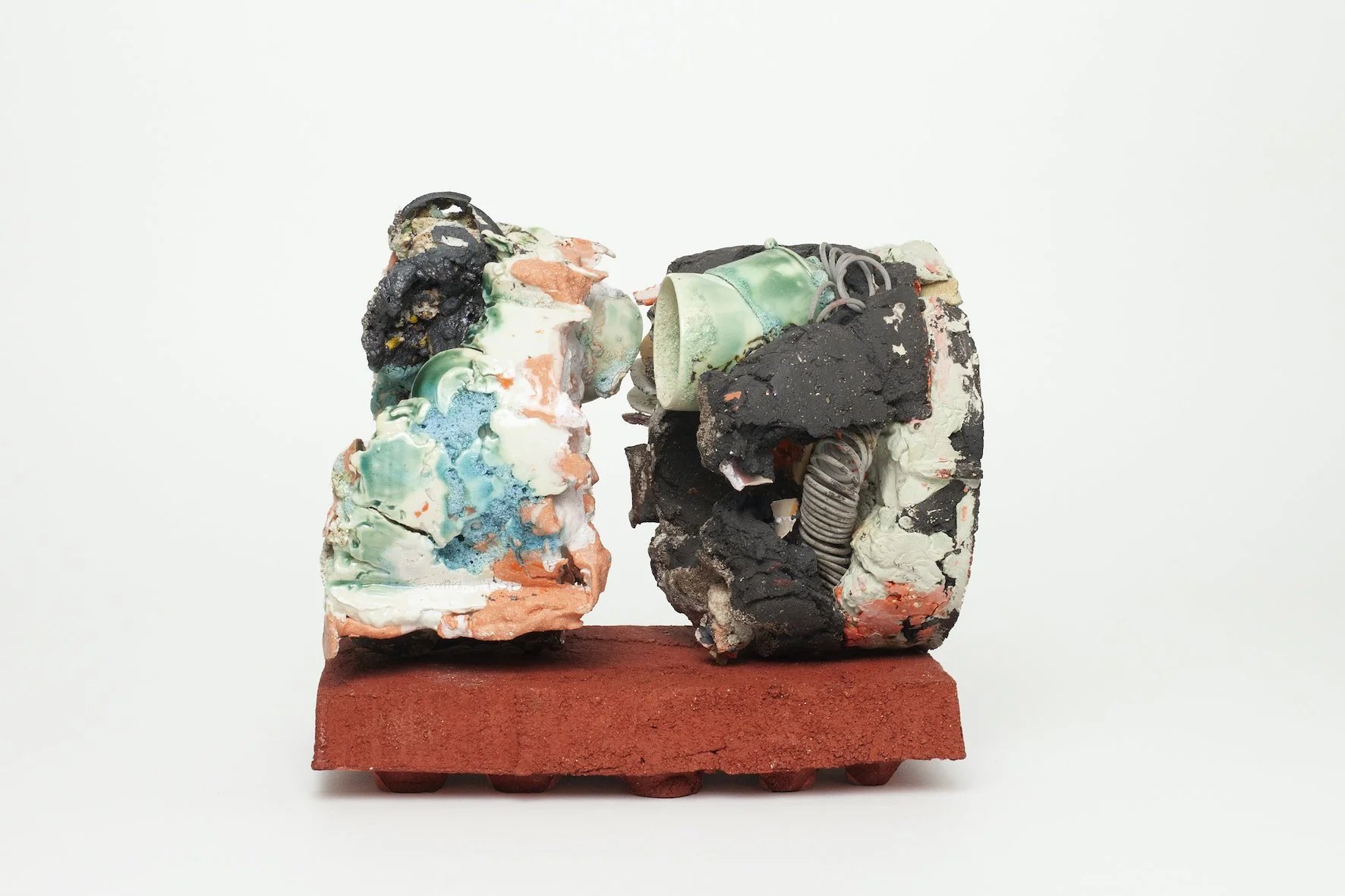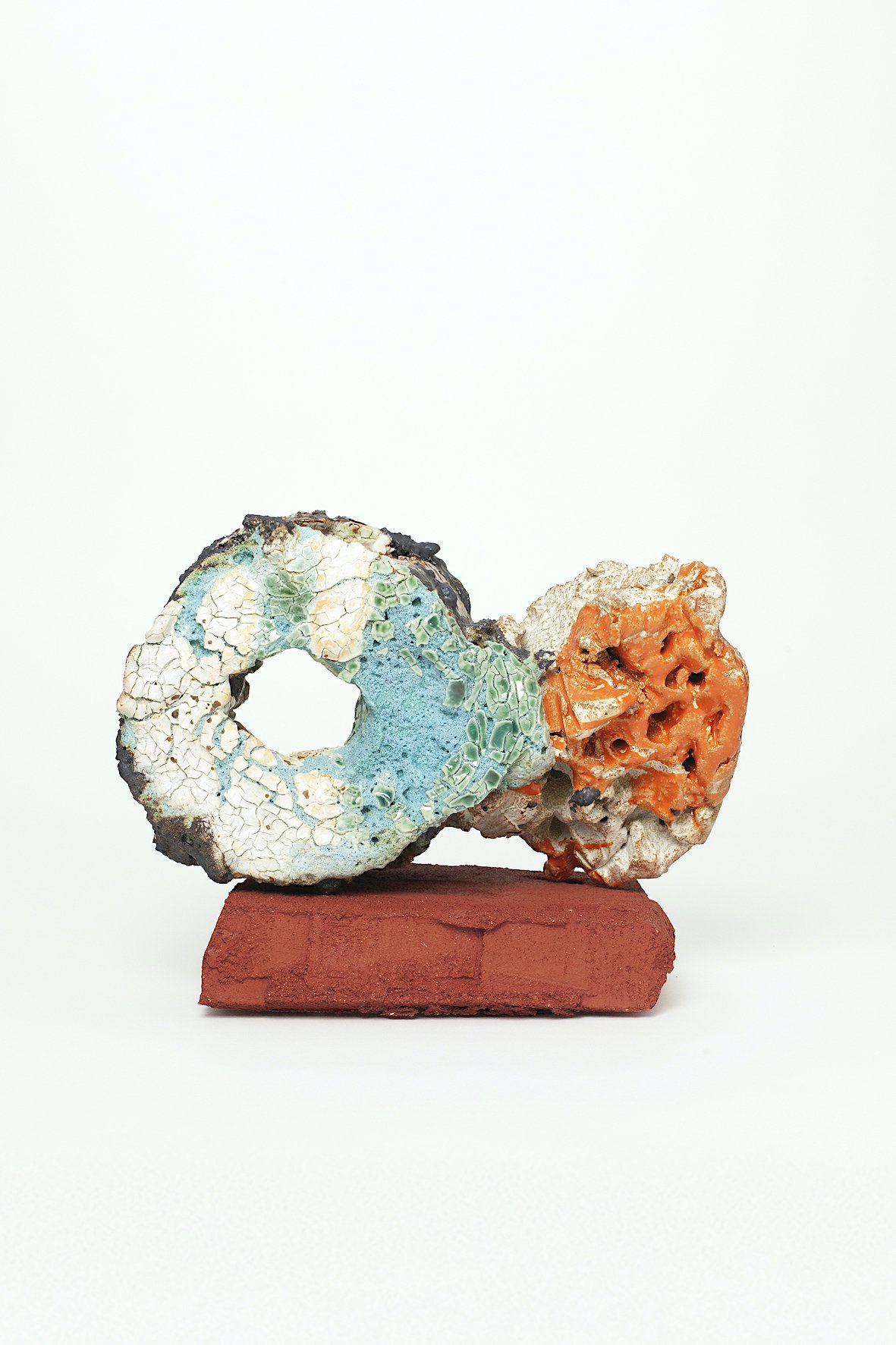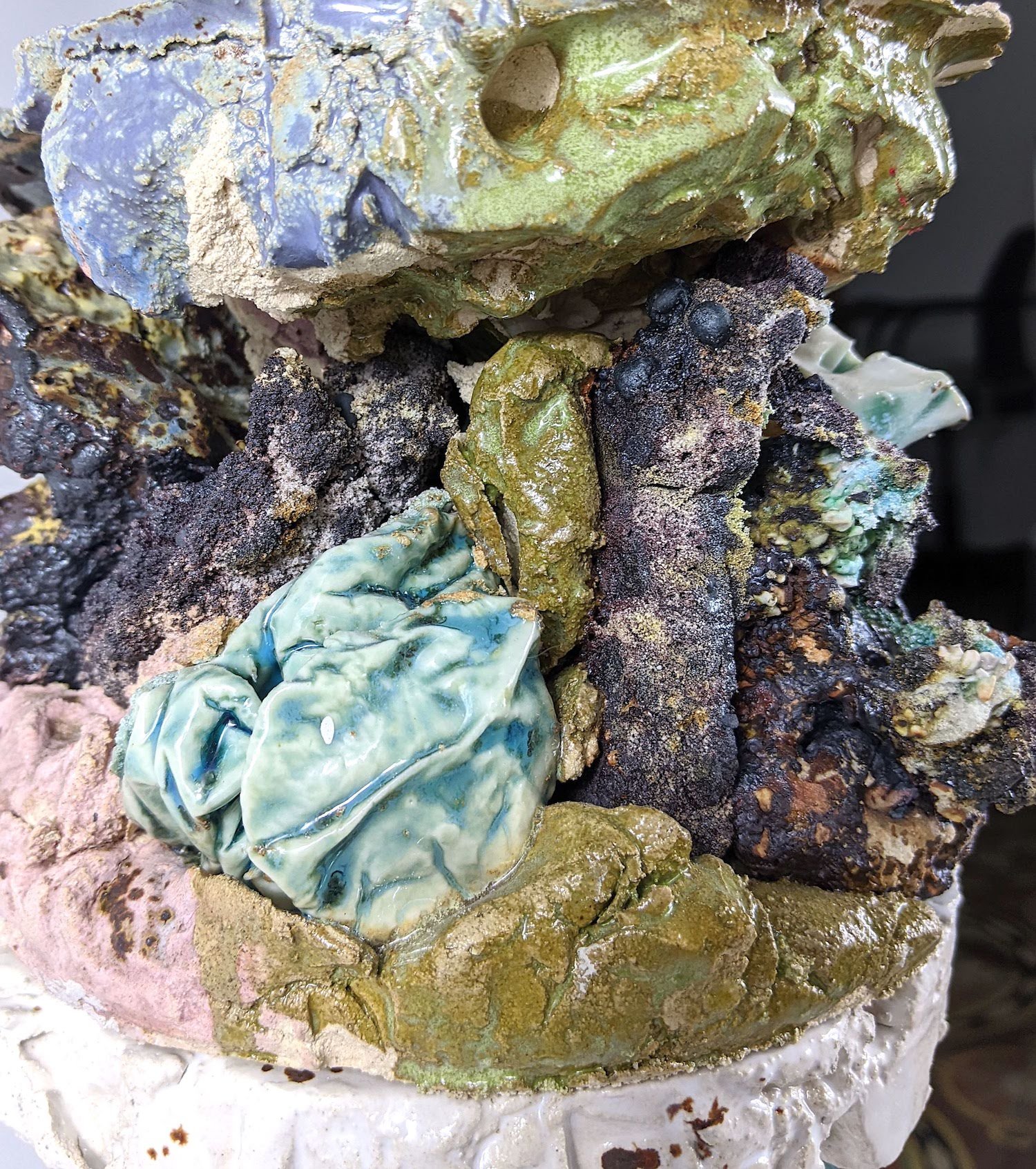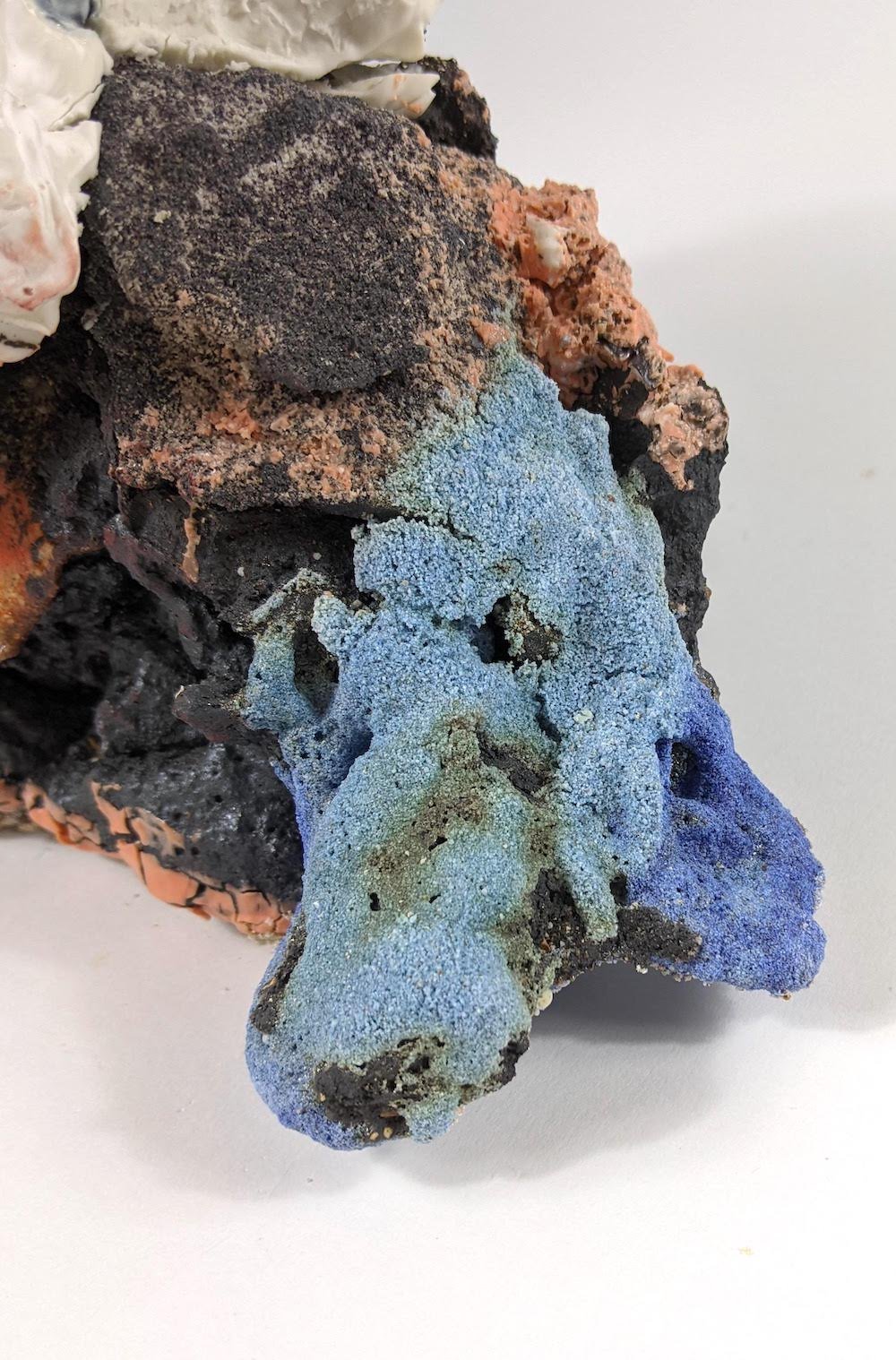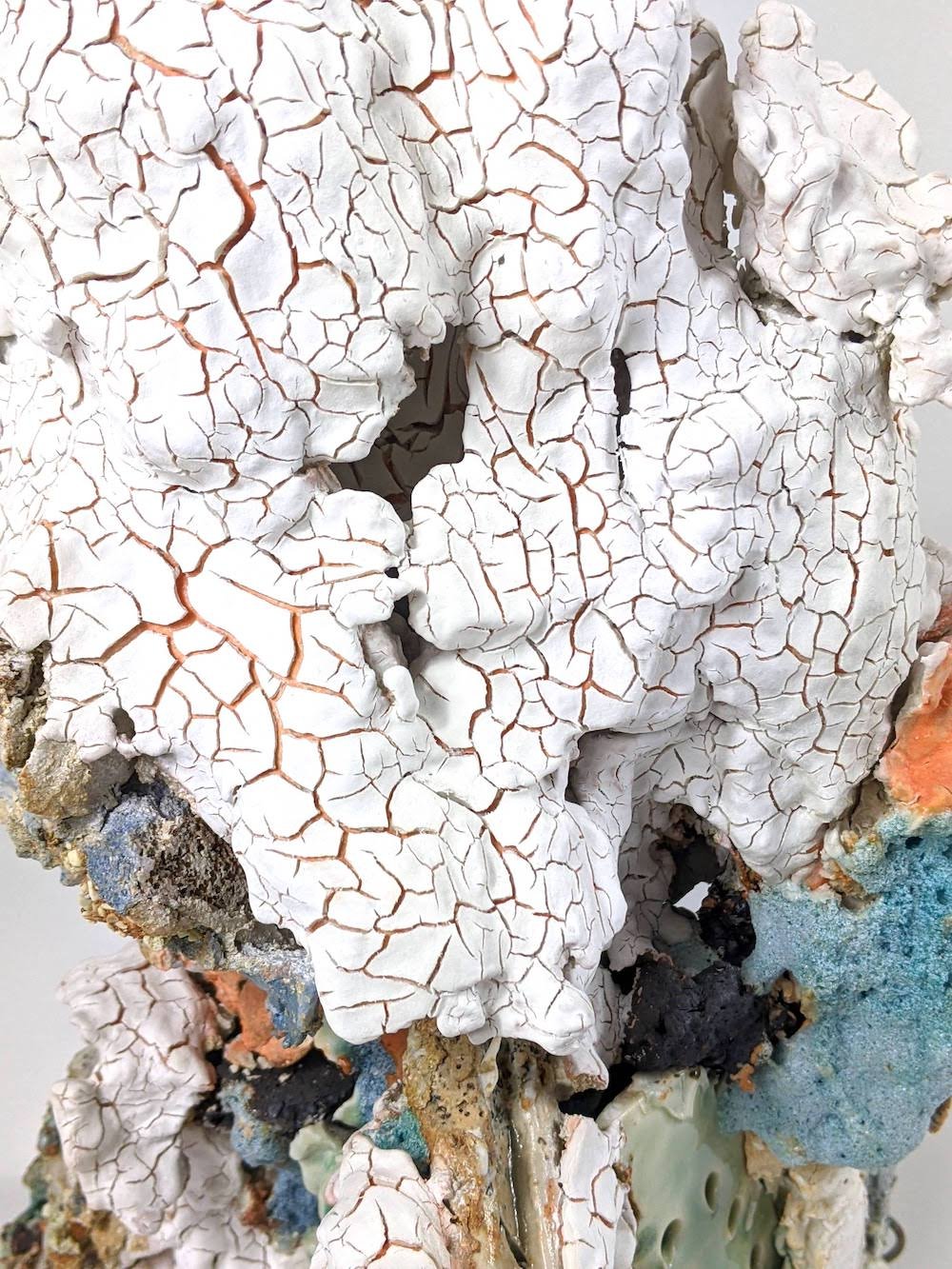Ussade: longing to belong
Ussade is a series of work exploring the themes of limitation, adaptation, and identity
Ussade: the Longing to Belong
Since relocating in Spain over a year ago I have worked on a new body of work exploring the themes of limitations and adaptation.
This work explores my own experience of otherness emerged in a new language and a new culture. By reusing old pieces that I break and incorporate in the new ones as a constant movement of destruction and creation, the work reflects on the themes of identity, transformation, and finding a new balance.
This series’ aesthetic is loosely influenced by everything that surrounded me, the new textures and colors of Spain, its ceramics’ history, and the new clays I discovered here. It has also been influenced by visual haikus and the ones from the poet Felícia Fuster in particular. The precarious arrangement of the verses on top of each other reminded me of my own situation in a new country, the accumulation of emotions and experiences challenging or beautiful. All these new experiences made up for intriguing piles and towers of new memories and new beginnings, new identity. I created the pieces of this series exploring the uncanny, the foreign and the uncertainty, the hidden meaning, and the necessity to let go in order to see new shapes and new meanings emerge.
Ussade is a word I invented to translate the longing I am feeling, the longing to belong, the desire to fit in, be part of this country and feel home again.
Photographs of the collection: Maria Fonti
Solo show: Ussade. At the International Contemporary Festival CERCO 2022 - Zaragoza. Room 1
Solo show at the International Contemporary Ceramics festival CERCO 2022 - Zaragoza - Room 2
Solo show : Ussade at CERCO 2022 - Room 3
Photographs of the exhibition: Anne-Laure Cano
Anne-Laure Cano: Ussade.
Esssay by Ashley Thorpe author of ‘Contemporary British Ceramics: Beneath the Surface’
In 2010, the Catalonian festival performance of Castells – human towers – was inscribed as a form of Intangible Cultural Heritage by UNESCO. Emerging from the festival crowd, the performers (Castellers) stand on each other’s shoulders in front of the balcony of the town hall, creating a human tower that is between six and ten levels (troncs) high. Believed to have developed from the religious Muixeranga dances from Valencia, the existence of Castells was documented in Reus in 1724, though they may have occurred elsewhere as early as 1712.[1] As temporary forms of architecture, Castells are declarations and displays of physical agility and technical prowess, the tower symbolising communal togetherness, identity, and belonging. Yet, each yearly iteration of the Castells builds another tier in the history of the form; their repeated appearance at annual festivals connects the present with the past, forging a strong historical sense of regional tradition.
Some of the most striking examples of work in Anne-Laure Cano’s Ussade series take the form of the tower. Like the Castells, her towers seem to quiver as they climb: they appear both fragile and robust, a product of honed technique but also instinctive reaction to the circumstances of the moment. Unlike the Castells, however, Cano’s work does not evince a strong sense of belonging. These bricolage forms thread together disparate materials, as though identity has been expanded and a sense of self has been lost. They raise the spectre of the Tower of Babel, the biblical city on the Shinar plain from which God scattered humanity and created new languages to limit human capability.[2]
The towers in Cano’s Ussade Series are symbolically contradictory. As buildings, towers are always rooted to deep foundations to support their height and weight. In contrast, Cano’s sculptures never touch the ground; some sit on plinths whilst others walk on tripods. This denial of placement affords the towers a topographical transience, as though they have just arrived from an undisclosed elsewhere. Perhaps this reading maps onto Cano’s own migratory history, her journeys around the world, which, most recently, have seen her emigrate from London to Barcelona, to a place with a strong sense of identity that is expressed in a language she cannot yet fully understand. Certainly, the works speak of gathering, of bringing together experiences and carrying them to new destinations. As assemblages of a vast array of material, they suggest that we ourselves are multiple: we are shaped by our experiences of love, hope, tragedy, and trauma. The towers seem weighty, as though such multifarious experience is arduous to carry. Yet, the exuberant beauty and joy arising from the interplay of materials and glaze suggest otherwise; that there is a privilege to globalised experiences. Such an assessment recognises how travel is only congenial when it is not forced; the tragic tales of migrants drowning as they cross from North Africa to Europe is testament to the desperation of nomadic exile. This is acknowledged in Cano’s work by the piling high of her towers, which evokes the overcrowded boats that have attempted to cross the Mediterranean and Balearic Seas.
Each tower hints at anthropomorphism via a bespoke identity, perhaps indicative of Cano’s desire to explore different themes relating to exile and migration. Ussade Series (114) consists of the tight stacking of matter, the tubular constriction of material evocative of a human body, and thus a life fully lived. The crowns atop Ussade Series (111) and Ussade Series (113) describe freedom of movement as symbols of power, of the cultural and economic privilege that owning a passport provides. Ussade Series (109) is so tall that it has its head in the clouds, seemingly blinded by its own sense of magnificence and superiority. Contrastingly, in Ussade Series (104), appendages emerge from a central body akin to arms and legs, as though a figure were standing on its head. In many ways, this is an apt reading, for all the towers are redolent of disorientation, of seeking to make order from the disordered, to build foundations on ground that has yet to settle, and to find belief in an era of doubt. For although migration has always been an intrinsic part of human history, technological advances in transport and communication have shrunk the globe, but not for everyone. And whilst digital technologies have advanced civilisation, the same period has also witnessed the destruction of the environment and the rapid spread of disease. How do we place ourselves in such destabilising times? Is civilisation as a marker of unending human progress a myth? What is the future for our species? Do we stand on fragile foundations? Cano’s work indirectly alludes to the hopes and fears that have defined the first quarter of the twenty-first century.
A sense of destabilisation runs through other of the Ussade forms. In Ussade Series (115), the disappearance of a leg leaves the body at an awkward angle, unable to move. It is a powerful sculpture that expresses a sense of entrapment, that we cannot outrun everything we face. In Ussade Series (108), a leg seems to push against a wall-like body, symbolic of exertion against an immovable force. Although these works may seem rather sombre in form, the vivid colours resist any intimation of victimhood. These are works that suggest the overcoming of obstacles, of rising to the challenge and embracing difficulty. They are, in one sense, metaphors for the creative process and the need to persist against all odds. But they are also optimistically expressive of the indomitability of the human spirit, our capacity to adapt and respond to change.
Whatever the impetus behind their making, the above works exhibit a more organic character that sits at odds with the restrictive verticality and rather ominous symbolism of the tower. Though Cano’s works are serious, they are never solemn. There is a strong sense of experimentation and light-hearted play in all her pieces. Ussade Series (102), for example, seems to resemble an animal, its legs set to run, or its wings ready to fly. As an animal that consists of many parts, it is perhaps a reference to Darwinist evolution, that lifeforms evolve and can never remain static if they are to survive. Yet, in its evocation of a domestic pet, it is also a reminder to hold on to the things that comfort us. To find solace and continuity in the interior of the home, even as the outside world changes around us.
Taken as a whole, the Ussade Series describes the complexity of facing the challenge of the new, and the tides of emotion that push and pull us in the process. In Ussade Series (116) two forms embrace, almost, though not quite. The work speaks of excitement and potential, the early days of falling in love or the anticipation of living somewhere new. But it could also signify misunderstanding and feelings of incompatibility. Ussade Series (63) goes further. In one sense, the conjoined forms evoke reconciliation to circumstance via the support of another. Equally, however, the work could symbolise attachment to another place, homesickness, or the missing of a loved one. Like the towers, these works rest on a base and do not touch the ground directly, but in their depiction of two embracing forms, a connection is asserted beyond the confines of geography. Attachment can provide support, whether it be love for another person, an activity, or a culture. As such, they describe the strengths of hybridity, the all-embracing power of two as they become one.
Cano’s work is direct and confrontational. Upon first sight, the jagged forms and conglomerate colours of the Ussade Series are challenging to interpret. Closer inspection reveals how each piece is constructed by a patchwork of beautifully glazed landscapes, a strikingly unique sense of colour, and an impressive ability to resolve materials into counterpoint whilst resisting the facile and the cloying. Cano harnesses vocabularies of architecture and sculpture in the service of robust, innovative, and emotionally intelligent ceramic works.
In her study of ancient towers on the Greek island of Sifnos, the architectural historian Amalia Androulidaki has argued that:
Architecture by its origin is the manifestation of order, of man-made order, that forms, gives shape to the world and at the same time, declares and displays man’s [sic] abilities, memorises his achievements and thus gives also meaning to the world. And this is true for all kinds of architecture, monumental and rural but of course, on a different scale. Monuments, whether they are creations of a society or individuals, have been built to manifest notional principles and values. They are definite as structures but quite indefinite as embodiments, manifestations of meaning. They serve as historical and social imprints and as gates of access to the intentions and the cultural context of their creator(s).[3]
This could easily stand as a summary of Cano’s Ussade Series. The readings proposed in this essay are one of many viable interpretations, for the lack of individualized titles prevents any anchoring of meaning. The only title to guide our interpretation is ‘Ussade’. What does it mean? There is no definition for this word in any dictionary. Consequently, the audience must decide upon meanings for themselves. Cano’s work challenges us to situate ourselves around the work, to find our own ‘place’. To achieve stability in a shifting world, we must first experience incomprehension, vulnerability, confusion, and frustration. For if these works are about anything, they are certainly about feeling. And if we are to face the challenges of the future, it is essential that we learn to feel the world around us.
————————————————-
[1] Pere Català I Roco, ‘Els Castells Dels Xiquets De Valls,’ https://usuaris.tinet.cat/rclibru/sonsimusiques/castellsxiquetsdevalls.htm. Date accessed: 12 Sept 2022.
[2] Book of Genesis, 11: 1-8.
[3]Amalia Androulidaki, The Meaning of the Architectural Form of the Tower: The Ancient Towers of Siphnos, Ph.D Diss, Heriot-Watt University, Edinburgh, 2007, 24
